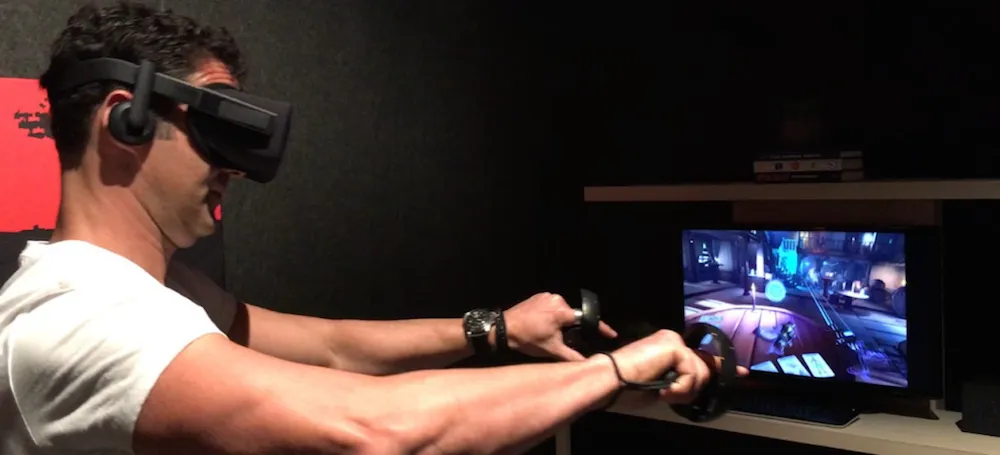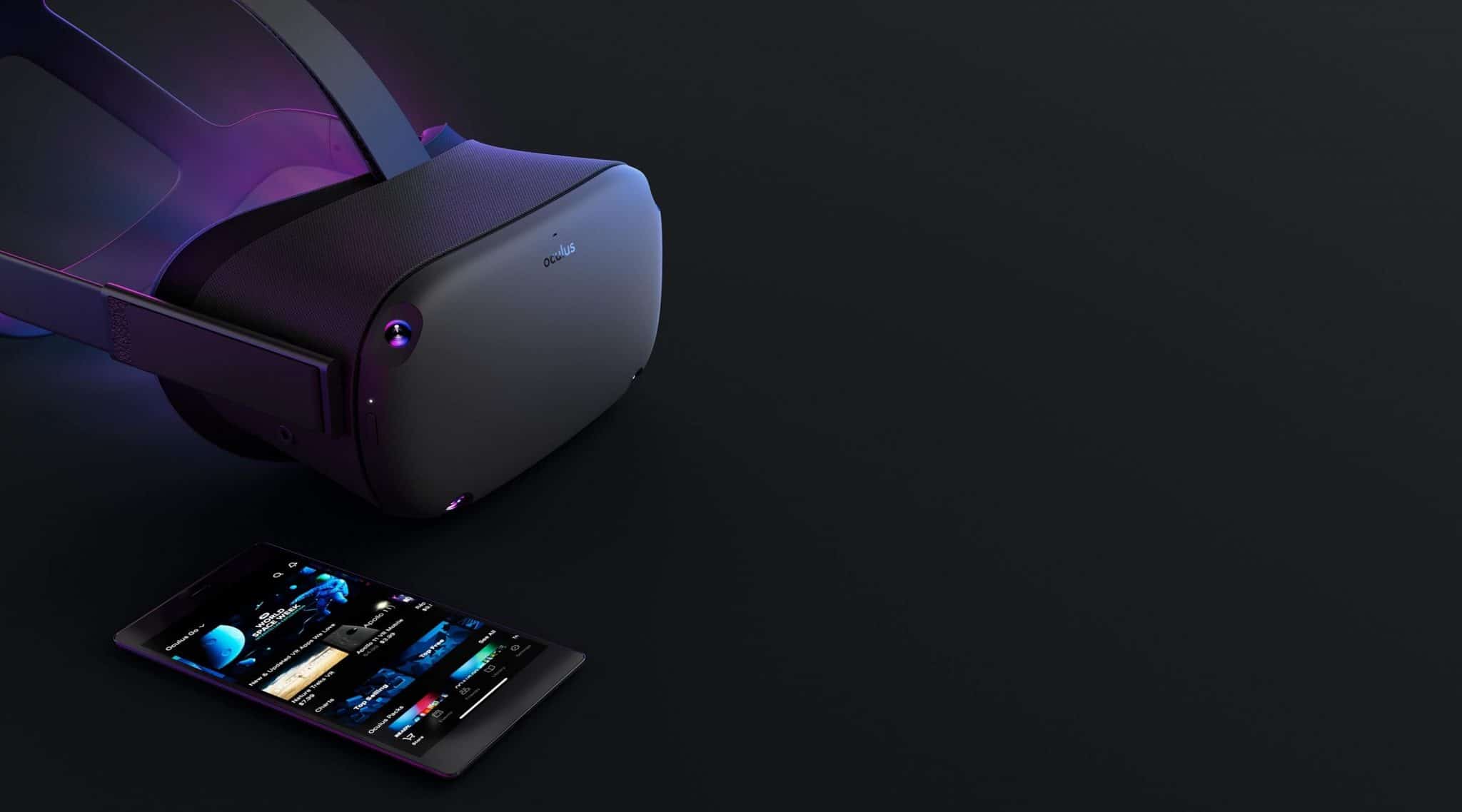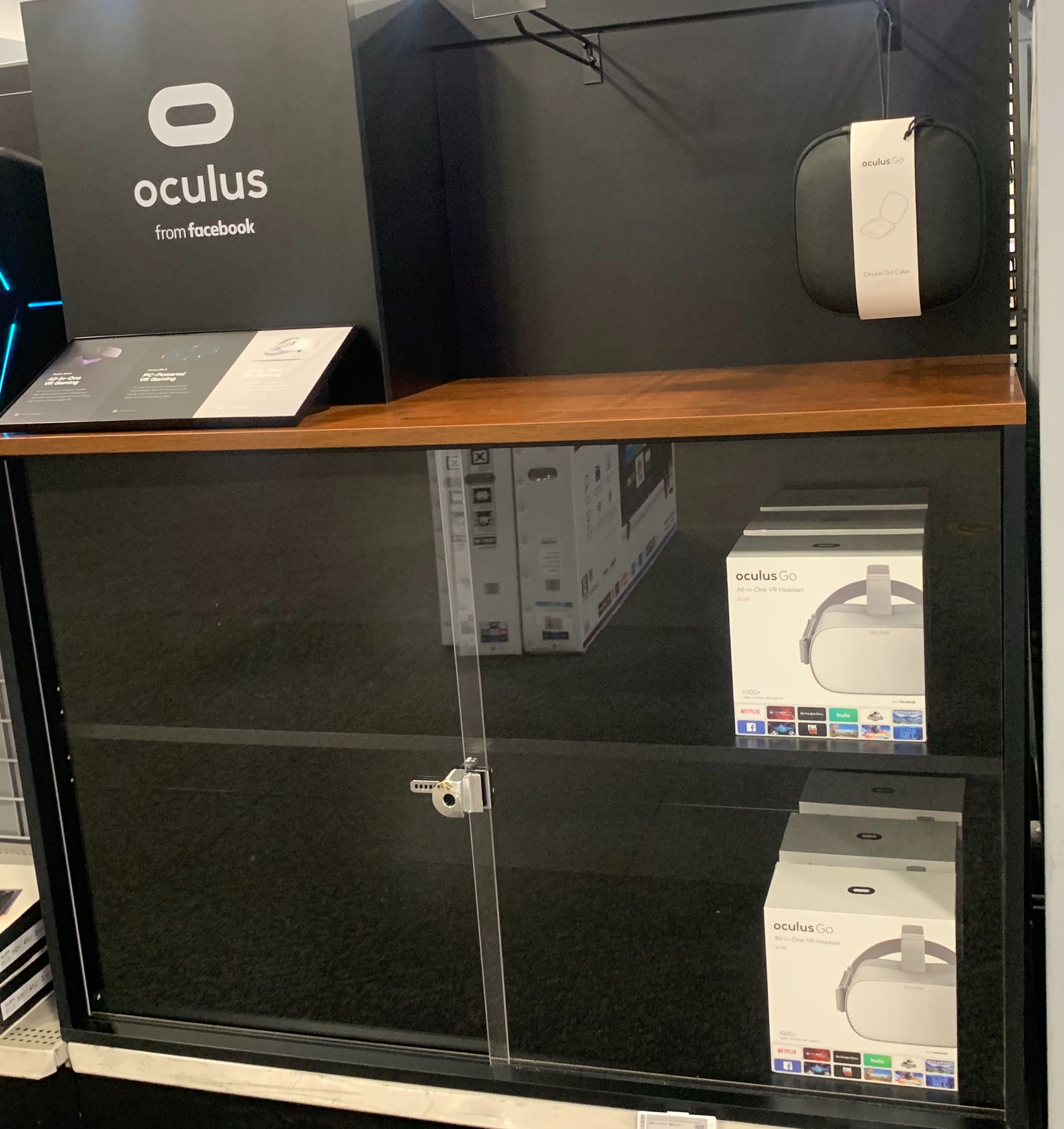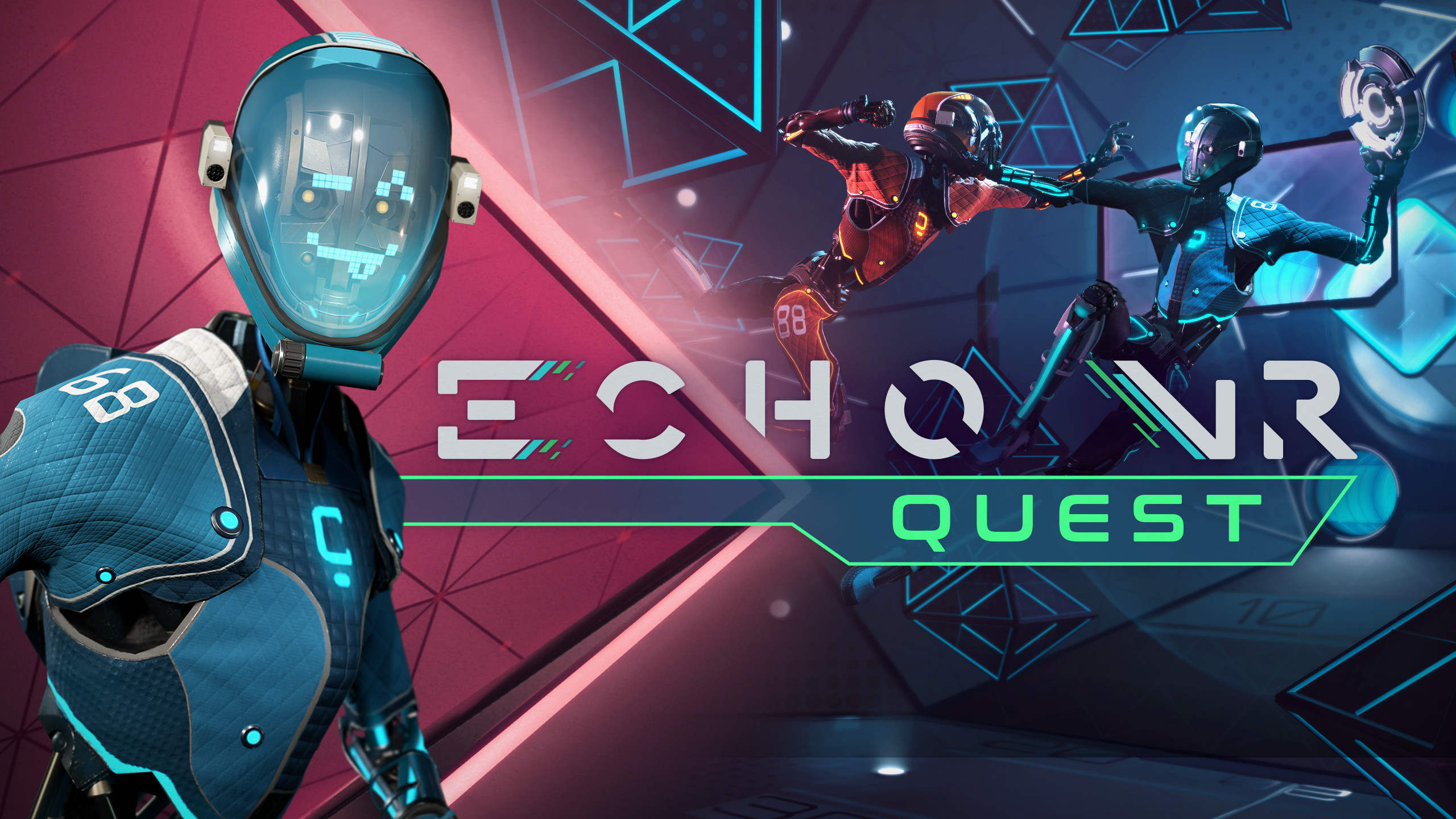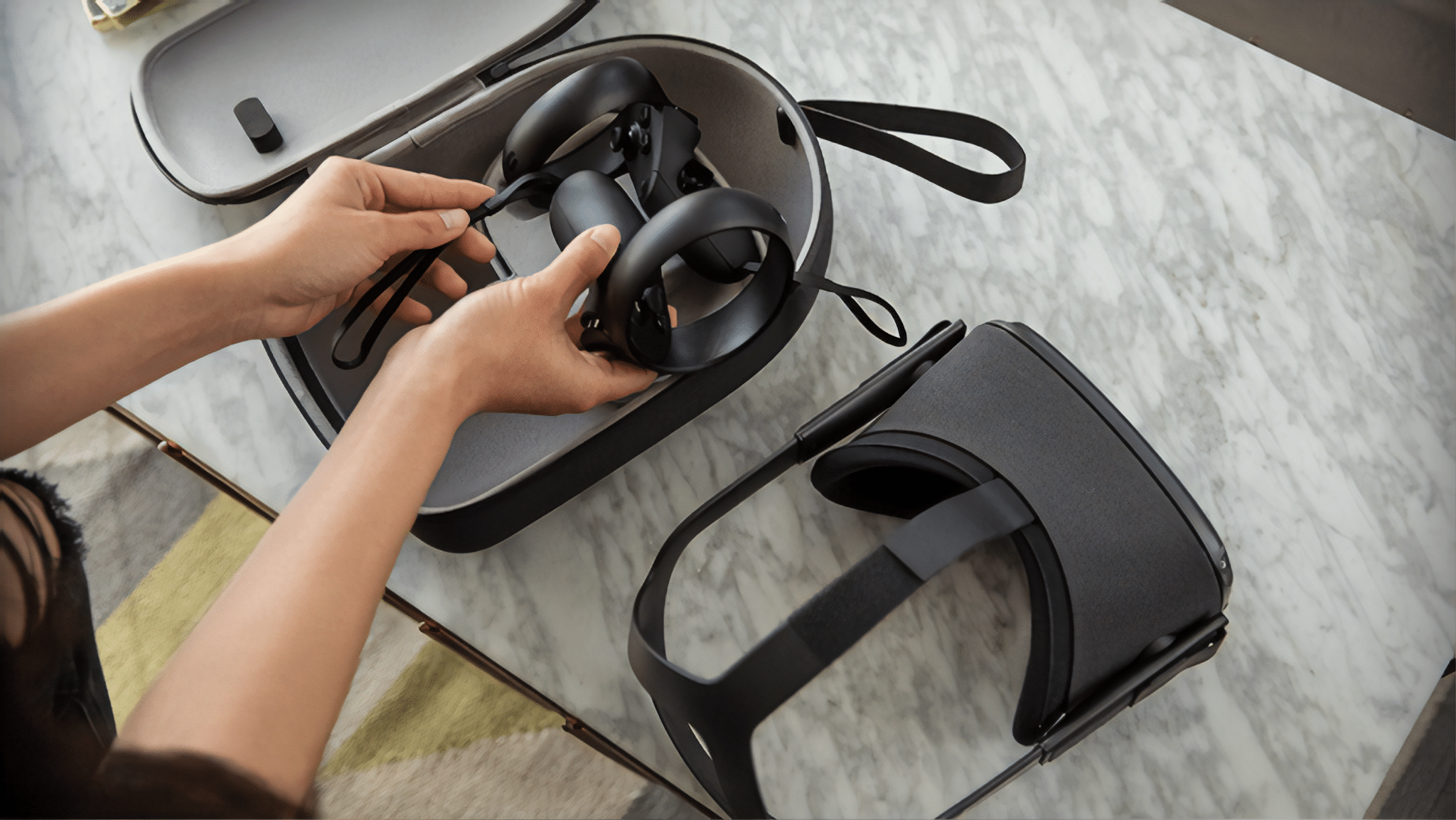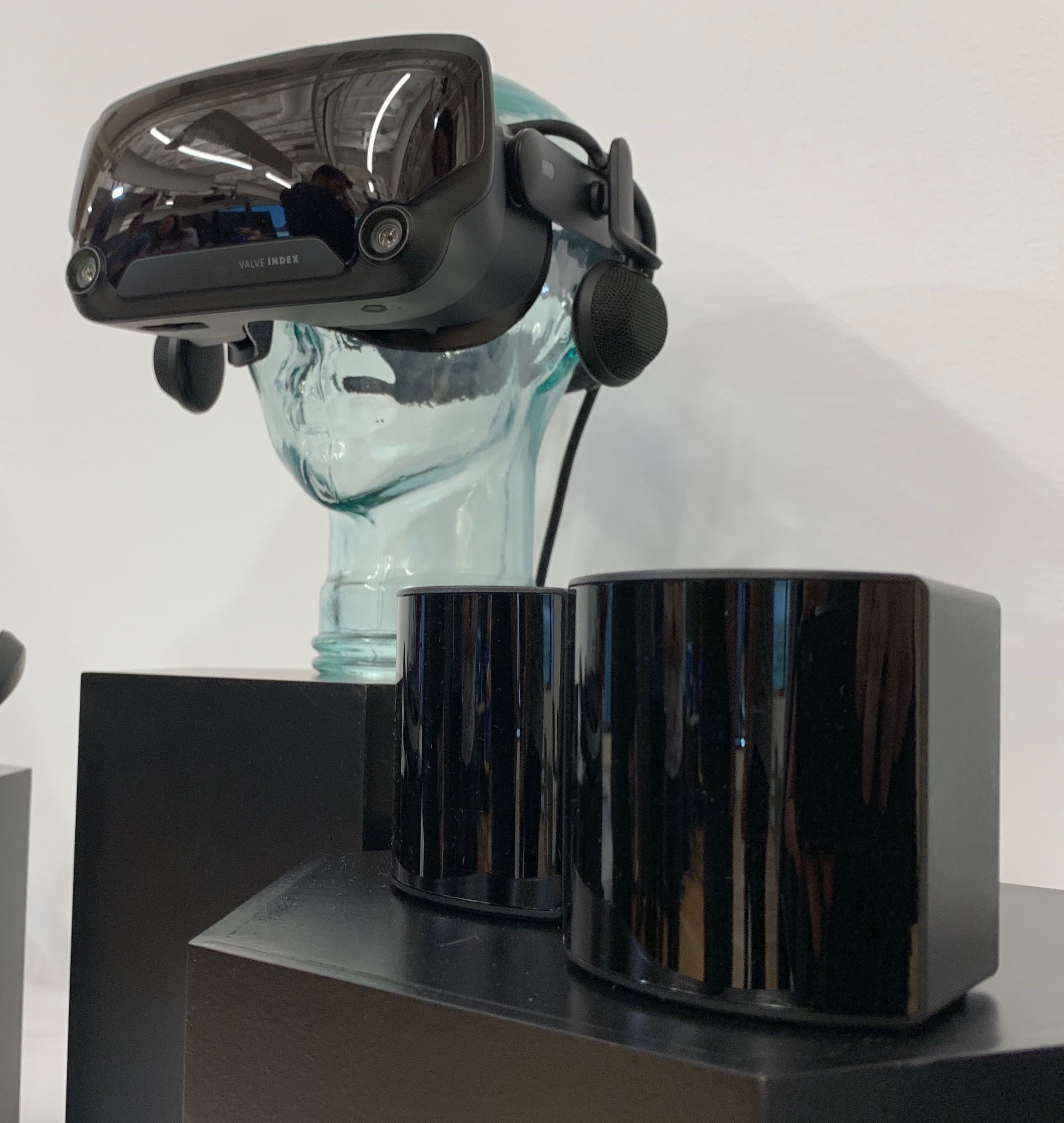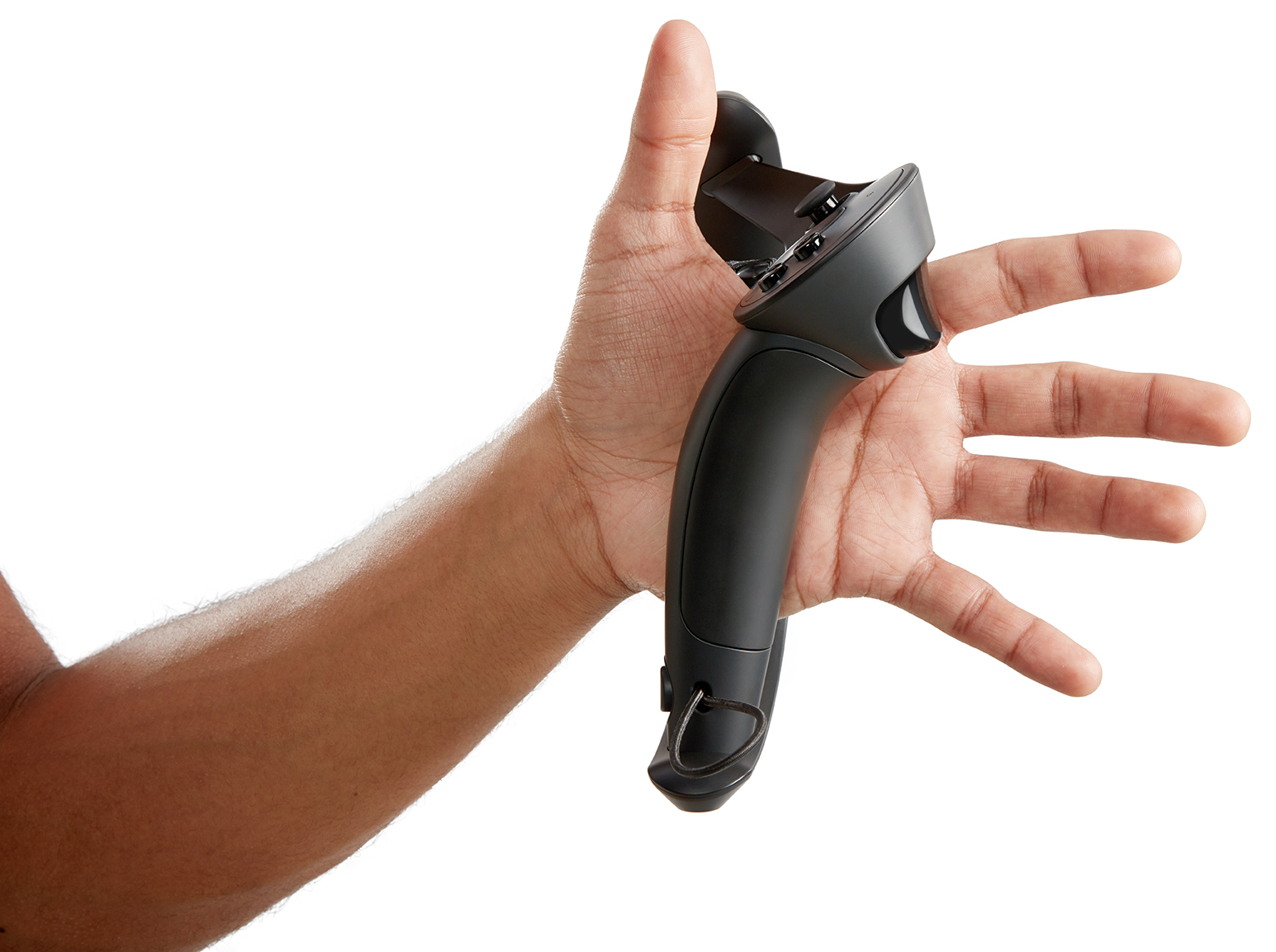At E3 this week in Los Angeles I played an early demo version of official 360-degree songs from Beat Saber and learned to steer a kayak in VR.
Afterward, I went to get lunch with Senior Editor David Jagneaux and we found Jason Rubin “VP of Special Gaming Strategies” at Facebook at a food court in the Los Angeles Convention Center. We talked for a few minutes before realizing our interview was scheduled to begin soon. So we returned to the room, hungry, and chatted for nearly 30 minutes.
Below is a transcript of our conversation.
The Oculus Quest
Ian Hamilton: Its been a long path. Are you happy with where you are in 2019, is it where you expected it to be?
Jason Rubin: Yes, very happy. Where I expected it to be? Yes in some ways, ahead in other ways, perhaps a little slower in other ways. Look, if someone had told me the experience you can get on a PC give or take a little bit of graphic prowess and CPU would be available for $399 in a single box within really 3 years of launching the PC product…so there, that’s ahead. Where are we behind? You know [pauses] I think that we’re still exploring VR content to see what resonates. You’re looking at Beat Saber — there have to be hundreds of Beat Sabers out there, we should have hit more of them, right? We should have hit more VR-specific moments and I think we just need more developers and more consumers in VR in order to hit them. It’s inevitable and I think now we have the right hardware. Beat Saber — we’ve heard from them Quest is [one of] the best ways to play Beat Saber. But they developed Beat Saber before Quest existed. Now that Quest exists, now that you have this standalone device, I think developers will really start pursuing what makes VR sing.
Hamilton: So I was reading the headlines out that and I saw Variety tried to get unit sales and I don’t think — you’re not saying unit sales? You’re not going to give us any indication?
Rubin: No I can’t. No, sorry. We’re doing quite well. I’m sure you’ve read the articles if you haven’t noticed yourself that it was sold out on Amazon. Just anecdotally…
Hamilton: I said [on Twitter] I brought one to this conference and someone replied to me and said ‘where’d you find it?’
Rubin: Yeah. I tried to get one from Best Buy because I wanted to have two of them at the house at one moment to try something multiplayer and there was a Best Buy pretty close to me. There were sold out and the website tells you how close they are. There was none in 250 miles….so the fact that it is sold out for all of L.A. is pretty impressive.
Hamilton: Without saying specifics can you say whether it is the biggest launch for VR yet?
Rubin: Well I can say yesterday we announced we sold within a few weeks over $5 million worth of software. That was announced yesterday. I can say that Superhot announced that they had a 300% better launch than they did on Rift and they said it was their strongest launch…it is an extremely strong launch. As I said, you know, anecdotally it is sold out in a lot of places and that’s been picked up. It couldn’t be much stronger when you don’t have units to get into consumer’s hands.
Hamilton: Do you think the price is so low that it is keeping others from releasing standalones as well?
Rubin: I believe but I do not know so I’m speaking now about what I believe that our inside out tracking — Insight — is ahead of a lot of other companies and I think that that more than anything is what’s keeping a lot of standalones from coming out. Two camera standalone, not as high quality, hooked up to PC — that is certainly possible. We’ve seen that. But all in one inside out tracking with Touch quality, or near PC Touch quality — I’m not sure that technology exists at other companies. I don’t know. And that’s required to put it in a box as a standalone. You can’t have it without that. So I can’t really answer that question because I don’t know, for example, that someone has a $599 option. I’ve seen nothing really comparable within a reasonable price point — nothing really working, so, I think we’ve done an incredible amount of R&D and I’m not sure that there’s anybody else out there doing as much R&D.
Oculus Insight
Hamilton: I found John Carmack at OC2, I think, and I asked him about inside out positional tracking and he said ‘I’d wish I’d had someone working on this for the last year.’ And that was at, like, OC2 [in 2015] and it seems like, obviously, the effort ramped up heavily after that.
Rubin: Heavily.
Hamilton: When did it become a top priority to get Insight right?
Rubin: Yeah.
Hamilton: And how big of an effort did that become?
Rubin: Well from very early on we knew inside out tracking was key to success not only in VR but, in the long term, its the key to success in AR. Nobody is going to be carrying around external sensors as they are walking around town with AR glasses. So inside out tracking and, more importantly, really small inside out tracking if you’re going to be using it with AR. And really fast inside out tracking — cause you don’t have the…if you’re wearing glasses that look like Ray-Ban’s you can’t have big, 20 cameras, you can’t have a large processor like — we have to nail inside out tracking for AR in the long run to work. And VR and AR. . .we’re working on both incredibly, uh, as much as we can at Facebook.
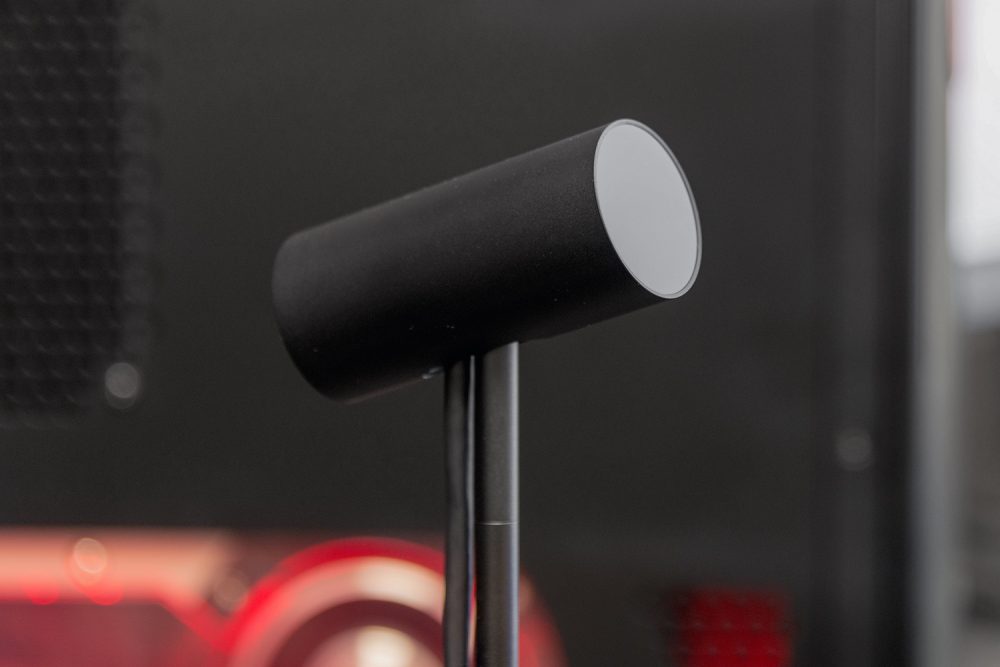
So from very early on inside out tracking was being worked on. Having said that, we also wanted to launch hardware because without an R&D kit out there — without a dev kit you can’t have software. Without software you can’t have consumers. Without consumers you can’t get feedback. So we had to launch Rift as quickly as we could to get dev kits out there, you know, and to get Rift into the marketplace to learn from the marketplace. We launched Touch a little bit later, unfortunately, I think we should have launched it with launch. But we were racing to get VR to be real so that developers you know, like, the developers you see on the walls around us, uh, the developers out there, could start prototyping. You know, Ready At Dawn needed Touch to get Lone Echo to work. Echo Arena, it was announced yesterday, is now coming to Quest. That’s awesome. That wouldn’t exist at Quest launch had we not launched pre-inside out tracking. So I think once we had that base from which developers could build software we could then divert at lot of resources to the future. Which we did. And you’re now seeing the fruits of that with Quest, and with Rift S for that matter which, is, you know, in my mind at least, a predominantly better way to do PC VR than to have the outside in tracking, and all of the USBs, or plugging it into walls, whatever you’re doing — tripods? Nobody needs that. Like, that’s not — that’s not adding in VR, it was necessary for VR.
Hamilton: Hmmmm, I think some of things we’ve put in our articles — is, esports level players, people that are pushing Echo Arena to its limits — whether they are going to find the experience meeting their expectations.
Rubin: Uh huh.
Hamilton: And I guess I’m wondering was that a discussion internally.
Rubin: Totally.
Hamilton: About whether you were going to be able to hit that bar?
Rubin: And this is an incredibly complex thing to answer because what most people don’t realize is that all of our tracking systems improve continually. Rift tracking today, Rift, not Rift S, the outside in tracking, is significantly better than it was the day that we launched it because we keep improving upon the technology. And the same will happen with Quest. As we are sitting here machine learning is getting better at the tracking. And, as well, we’re coming up with ideas that improve the tracking. So, it is impossible to say which one is going to be better because we don’t know where either of them would end up with endless continual work. What I will say is this. Right now there are different trade-offs. There are things you can’t do well with inside out tracking, for example, put the controllers right up to your ears or behind your back because the lenses can’t see it. At the same time there are things that outside in tracking do poorly, even with three or four sensors the motion of putting your two hands in front of each other when you’ve blocked the back sensors with your body and the front sensors are in front of you, it doesn’t work, and there’s not a great solution to get around that unless you combine inside out and outside in tracking. Which is possible but, you know, on a mobile device that now grabbing a lot of CPU/GPU. The point of this answer is not to tell you which one is better or worse, it is to say we really are in an evolutionary process with all of our tracking systems that, even since launch a few weeks ago, things have changed and will continue to change and tracking will just get better. What I am sure of, and I will make a statement about, is that ultimately people don’t want the hassle of external trackers if they can get the same or nearly equivalent quality without it. We believe that strongly and the consumer has been telling us that and, we think post-launch, we’re hearing that.
Next Quests
Hamilton: Let me, I’m going to have to figure out a way you’re actually going to give me something useful here because…
Rubin: Ok [Laughs]
Hamilton: Is the future of Quest more graphical power or less weight?
Rubin: Yes.
Hamilton: Which is the bigger priority?
Rubin: [Pause] To answer that question you could go around Oculus and you could ask different people and you would get different answers. And that’s true, by the way, of a huge vector of options. Is higher resolution screens more important than wireless transmission, say, from a PC if you’re making a PC headset? Hard to say, some people care about the resolution, don’t care about the wire. Some people say the wire kills it. I don’t care about the resolution I’m fine with where we are. And all of these things are trade offs. What I know is a few years from now you will have a lighter device that simultaneously has better tracking, higher resolution screens and higher CPU/GPU. All of those thing will come true. The balance of where we focus more or less is up for debate internally as we speak but all of those things will happen to these devices.
PC VR Market
Hamilton: I think the reason I ask that question is because of that PC connection, right, there is — were you surprised by the desire and the response when Quest hit of people begging, more or less, for some kind of a PC connection. I mean, we’ve seen how many different solutions to hack that — to hack that through?
Rubin: Yeah.
Hamilton: People trying to get their PC inside their headset. Um, so I guess I’m wondering.
Rubin: You know, on that you know Carmack…
Hamilton: Carmack has made some comments that its being worked on or its being looked at. I guess I’m wanting to know the priority level there.
Rubin: Right, well, first of all if all these people who have PCs are trying to get Quest to work with their PCs what that’s telling you is that they appreciate the tracking. So lets just put a pin in that, right. These are people who are willing to probably to be our users already, because they have a library of VR titles they want to use otherwise they would be fine with Quest, and they want to abandon their outside-in tracked system, whatever that is, because that’s all that’s out there, give or take Microsoft’s two camera solution, and they want to move to Quest. Which says to you there is a large percentage of people on the PC that prefer the inside out tracking of Quest, perhaps they want the IPD as opposed to digital IPD perhaps they like one strap over another because Rift S has a- you know, whatever. So, just put a pin in that.
We believe in the PC marketplace for a lot of reasons. Not the least of which is that the PC audience is willing to experiment and VR needs experimentation when it comes to software development. As a developer, I need the PC to feed the best quality ideas after consumers have vetted them to the more console-like audience that wants high quality, polished, large titles and not demoware in a more console-like universe. So those two systems have to both survive. And in that world it would be nice to build only one hardware but right now the solutions you’re seeing, hacking wise, yeah they work — yeah you can send a screen from one place to another, great — experience-wise, not very good. So until we, Oculus, can get the quality level to a point where we believe its good enough, um, we won’t launch it. And just keep in mind, like, how hard we worked so that people would say there is a difference perhaps between the Echo Arena pro esport player, with regards to inside out tracking and Rift tracking and that’s the line we’re drawing — not “the tracking’s not as good on Quest” right, like, we have an extremely high bar for quality and we won’t release something until the quality is there. We’d love to have one device that does PC and mobile, absolutely, we would love to have that, but the quality has to be there.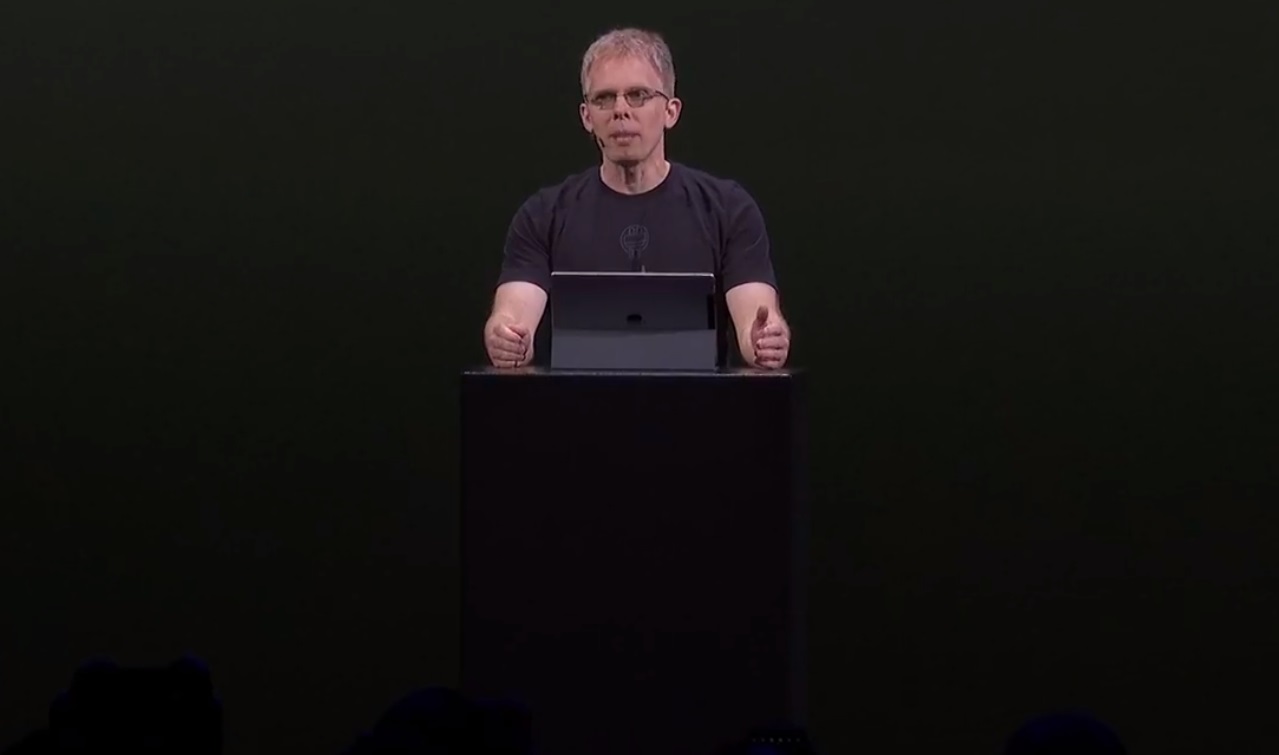
Oculus Go
Hamilton: Um, where does Go sit in your lineup at this point? Because it just isn’t there. It doesn’t compare experientially to what Quest or Rift is.
Rubin: Yeah.
Hamilton: And I guess I’m wondering, like, with Quest sold out I imagine people are picking up Oculus Go by mistake thinking they are getting a Beat Saber machine, um, just because it is the only thing left on the stand at the store.
Rubin: Yeah.
Hamilton: They don’t know what VR is.
Rubin: Sure.
Hamilton: So I’m just wondering, where does Go go in this new world?
Rubin: We are sitting at a game conference. When it comes to gaming it has been clear for a long time people want 6 degrees of freedom and they want their hands in there. Again, I say we launched Touch too late. We should have known earlier that Touch was an integral part of the VR experience for Rift. We learned that and that is what Quest has and what Rift S has because it is so important. When it comes to media viewing, those things aren’t as necessary. We’ve seen from our telemetrics that a lot of people that are playing with Go, or join Go, are using it as a media device. Whether it’s a…in Netflix TV that they are using, they only have one TV in a small dorm room, or whatever, and the other person is watching something you don’t want to watch, put on a Go, there’s a use case, when it comes to games you are correct, I don’t know if anyone is making that mistake, if they are I hope they bought it from a place with a great refund policy because…
Hamilton: [Laughs]
Rubin: If they are buying Go for games — there are good games on Go, don’t get me wrong — but the use case is media.
Hamilton: The question I asked earlier about what the future of Quest looks like — what does the future of Go look like?
Rubin: That’s a good question, um, I don’t really have anything to announce there. The question for us is — is the media use case worth expanding upon, doubling down upon, continuing with? When it comes to Go it does an incredibly good job with the media use case. I’m not sure what we would do. We could add resolution to the screen to be sure, there’s not that much — we could make it lighter, but its not that heavy a device, its a pretty light device, we could improve the controller but you’re not really using the controller on Go for most of what you do with it. You’re really just starting and stopping and pausing. It’s not really a controller-based device. So what happens to Go is a good question, we continually watch the use cases, see how people retain, how much time they are spending with it, things like that. What we are absolutely positive about is that it is not a game device. It is not an interactive entertainment device. That device is Quest. And being sold out on Quest is, as you pointed out, points us to the fact that a lot of people are waking up to the fact that that’s what they want.
Oculus Rift Exclusives
Hamilton: Are you still developing new games, beyond the ones we’re seeing here today, for Oculus Rift first?
Rubin: Oculus Rift first? I’m not sure. If the right project… I mean yes there are some in production, but what we look at is if the right project comes that we think can only be done on PC, and needs to be done to prove something out, we would fund it. Because again innovation is what we rely on the PC for delivering.
We are not graphically married…we are not pursuing graphics as, like, a goal. So if someone just comes and says we don’t want to build it for Quest because we want to have cutting edge graphics and we don’t want to worry about porting it down the Quest, that’s probably not a title we would make. If it can come to Quest, we want it to come to Quest. So for the most part the titles that we’re looking for now will run on both (that we’re funding).
And developers that are experimenting, we point them at the PC and say do whatever you want. I mean crazy ideas. If somebody comes and says we’re going to build a beat based game with swords it’s a hard thing for us to, like, say greenlight that for a device where we’re curating the store. But Rift is a great testbed for something like Beat Saber. And sure enough, the whole world wants Beat Saber, very clearly, right? So we need Rift to do that experimentation.
David Jagneaux: The Respawn game, can you say whether or not that’s gonna be on Quest?
Rubin: As of today we’re not announcing whether Respawn’s game is coming to Quest.
Pocket Compute For VR
Hamilton: Is there an option for a mobile compute with a wire that you keep in your pocket, a computer box you keep in your pocket and run your headset. Is that a model that you’re looking at?
Rubin: That’s a model we’ve definitely explored. There’s a lot of upsides to it, like visually having the smaller glasses on your head, big advantage. Battery, keeping the weight away, the heat away from the screen, being able to separate battery. All of that is great. The problem is when you do it, cause we’ve tried it, you have a wire. And you don’t ever forget that wire.
So you’ve effectively ended up with a wired device again. I know it doesn’t seem like that because you can move 100 yards in any given direction, but that 100 yards the wire comes with you. The best way for you to experiment with this is to use the Magic Leap, because Magic Leap has that wire. That’s effectively the setup you’re asking about and while you’re using that ask yourself whether or not the wire ever truly disappears. What we want from a wireless device is no feeling of wire and no massive added weight because we’re streaming from another platform onto some two, you know, pound thing or six ounce thing we’re sticking to the top of your head. And so we’ve tried it, it seems like it would be a great idea, in practice it’s kind of not getting rid of the wire.
Hamilton: So the reason I ask all these questions about platforms is that 10 million person goal that has been stated by Zuckerberg…
The Oculus effort… you know you had Gear VR first, and then Rift, and then Go even, these are almost like different platform launches and Quest is like the fourth. And it’s confusing for consumers to look at headset after headset after headset and say when is it actually going to be here? But as you’ve repeatedly said there’s a lot of experimentation & exploration on PCs and it seems like there are users on PC who keep coming back to their headsets and spending significant amounts of time…
Rubin: Absolutely.
Valve Index
Hamilton: …In their PC headsets. I’ve been spending time with the Valve Index. I enjoy the clutching & release sensation quite a bit and I guess I’m wondering… Number one, visual comfort on that headset is very very finely tuned and that increases the amount of time that I want to spend in VR in a different way than the wireless on Quest does. But it still serves an audience and makes the experience better and invites people into these virtual worlds that much more. What is the value of the releasing sensation? Is it something that you are going to want to give to developers over time?
Rubin: You’re absolutely right about experimentation. The VR market is extremely early. And unlike the 2D video game market where you basically are pushing things to a screen and there wasn’t as much to experiment with — there were major changes, CD for example, 3D graphics, 2D graphics — but it wasn’t on your body. It didn’t have the trade-offs that VR has. We are still on a long road of experimentation. Having said that, Quest is a success. Quest is clearly proving itself valuable, and we are going to focus on Quest and the Quest ecosystem for a good period of time.
So if somebody is waiting to get in, Quest is the right point. Quest is, we’re going to be there making Quest software for the foreseeable future. There are already great things in the store, we’re showing new ones today, we’ll continue to release new stuff, eventually third parties that we didn’t, kind of pay to make, or ask to make products early, will get in and start making it organically…You couldn’t get a dev kit without Oculus giving you a dev kit but we’ll get into the point at which people are submitting things to us we never expected. Quest is the right space to be in.
Quest is not the ultimate hardware device in the same way that the iPhone 1 was good, the iPhone 2 was better, iPhone 3 (you know the names change over time), but they kept getting better. That’s going to keep happening. And like you can’t pick a point to go in.
To answer your question specifically, because I’m not dodging: I’m not sure… from our research Touch is kind of hitting a home run. And there’s definitely more we can do. If there are things we see others do that pick up a lot of traction we will definitely think about adopting them. But it has to come in at a price point where we’re not again putting ourselves in a position where the vast majority of people can’t use it. Facebook wants VR to reach the masses. And for all its strengths, the Index is not a mass market price device. And we don’t want to get into a world in which…
There are amazing things we could do for $2000 right now. I will tell you that. We would blow you away for $2000. You would leave the show and write a awesome article about what we could do for $2000. For ten grand, we would change your life — and exactly a thousand people would buy it. And so like there’s this interplay between the price point and what we can deliver rationally into an audience big enough to give developers an ecosystem. That we’re very cognizant of.
It is awesome that there’s competition out there. It is great that people are developing different types of controller. We look at all of them, and if people are like Index is just that controller, great. Let’s try to bring that into a price point where we can put it on the shelf for $399 or less, if it’s going to be our, you know, focus device. Who knows? I mean these devices will continue to change. But again to close: if you’re thinking about getting into VR and you are not a PC owner and you do not have that experimental cutting edge kind of focus — which there’s a Rift for that right, the Rift S or maybe it’s an Index for that — if you’re in it and you just want to put it on easily, have it work, love the content, know it’s high quality and know that anything you buy has been vetted, it is an awesome experience. Quest is there and it’s going to be there for years and we’re not going to make you regret it.
Quest Console Content Curation
Hamilton: The vetting. Lets end there on that question. Are you happy with the messaging in this first month of, of, just letting people know how hard it was going to be to get on Quest, and are you happy with the level of support that you’re giving to those devs who were there early but were unable to get in the queue to get on Quest?
Rubin: Yeah. A couple of things. First of all we have a PC product we’re heavily supporting and we turn no developer away unless the thing is really really like not shippable on PC because we want to give them an opportunity to prove their idea has value. And in some cases it’s the idea that has value and not necessarily their instantiation. And another developer says that was a great idea and makes a better version and then somebody else makes a better one. That’s the game industry.
So we want that to be on PC and do not want that to be on Quest. We have never rejected software because we don’t like the concept, we don’t like the idea of the product, it is 100 percent based on quality. There have been a couple of developers that have been turned down for Quest who were not turned down for Rift, so let’s be very clear; Oculus did not turn them down. We said that the quality of the software that they were delivering could not go on Quest at the price point that they were suggesting or could not reach the bar to have a price on Quest because it didn’t compare to the other pieces of software. None of those were based on what was in the content. I’ve heard people say “they don’t like a certain type of lifestyle”, that is absolutely untrue, it is 100% based on quality and value, not based on anything else.
Hamilton: Thank you for the time.
Updated transcript on June 13, 2019 with small corrections.

